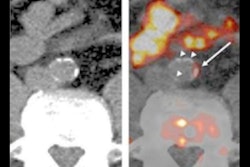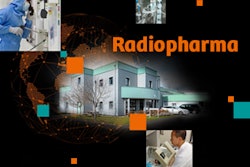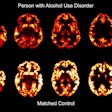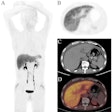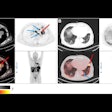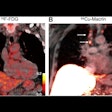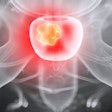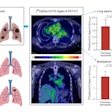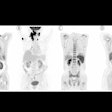PET/CT imaging with F-18 sodium fluoride (NaF) is emerging as a sensitive tool for detecting early atherosclerosis, according to a presentation at the recent Society of Nuclear Medicine and Molecular Imaging (SNMMI) annual meeting.
Shiv Patil, a student and researcher from the University of Pennsylvania, presented an F-18 NaF-PET/CT study that found the approach visualized biologically active vascular microcalcification in patients at early stages of the disease versus healthy volunteers.
“Currently, atherosclerosis is diagnosed at a relatively late stage in its disease course, typically through clinical assessments and structural imaging modalities such as CT,” Patil noted.
Conversely, F-18 NaF is a leading PET radiotracer for quantifying microcalcification based on uptake of the tracer by deposits in the lining of arteries. In this study, Patil and colleagues assessed its utility in patients at low to moderate risk for the disease.
“The novelty of our approach in this study is that we’re specifically interested in patients at early stage of subclinical cardiovascular disease,” Patil said.
The researchers retrospectively identified 115 patients who underwent F-18 NaF-PET/CT in a previous clinical trial. They analyzed images from 42 participants with clinical risk factors compared to 73 healthy control participants. The patients ranged in age from 21 to 75 years old.
Specifically, the group quantified artery microcalcification based on mean standard uptake values (SUVmean) of F-18 NaF in regions of interest in the left common carotid arteries (LCC) and right common carotid arteries (RCC). Next, they used a linear regression model to correlate SUVmean with cardiovascular risk factors.
The analysis identified direct correlations between F-18 NaF uptake and risk factors such as age, body mass index, smoking history, fibrinogen (an inflammatory marker), and high-density lipoprotein cholesterol. Moreover, inverse associations were seen between F-18 NaF uptake and male gender and levels of C-reactive protein, Patil reported.
Ultimately, at-risk individuals showed higher F-18 NaF uptake compared with healthy volunteers, and uptake increased with estimated risk of adverse cardiovascular events, according to the findings.
“This shows us that [F-18 NaF-PET/CT] may potentially aid in the identification of these vulnerable patients,” Patil said.
Future studies, particularly longitudinal clinical trials are warranted in this field to fully understand and realize the potential of F-18 NaF-PET/CT in cardiovascular clinical decision-making, he concluded.







